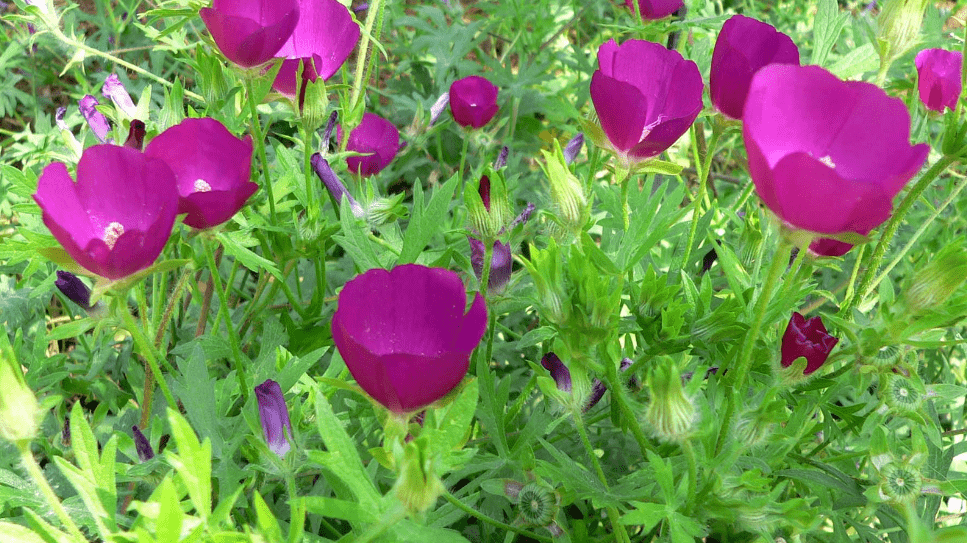
Growing Poppy Mallow Plants: Tips for Vibrant Blooms
Gardening enthusiasts, listen up! If you want to add vibrant pops of color to your garden, then you need to learn how to grow poppy mallow plants. These stunning flowers are a beautiful addition to any garden, but they require specific care and attention to thrive. In this post, we’ll share expert tips on how to grow poppy mallow plants for vibrant blooms that will elevate your garden to the next level. Whether you’re a beginner or experienced gardener, these tips will help you achieve stunning results. Don’t miss out on the opportunity to enhance your garden with the beauty of poppy mallow plants. Let’s dive in and make your garden the envy of the neighborhood!
Table of Contents
ToggleUnderstanding the Poppy Mallow Plant
A. Botanical Profile
The poppy mallow plant is a show-stopping addition to any garden with its vibrant and eye-catching flowers and lush foliage. With its stunning petals in shades of pink and purple, it’s sure to be the focal point of your garden.
B. Varieties of Poppy Mallow
There are several different varieties of poppy mallow to choose from, each with its own unique characteristics and colors. Whether you prefer the classic pink and purple hues, or something a little more unusual like the white or red varieties, there’s a poppy mallow plant for everyone.
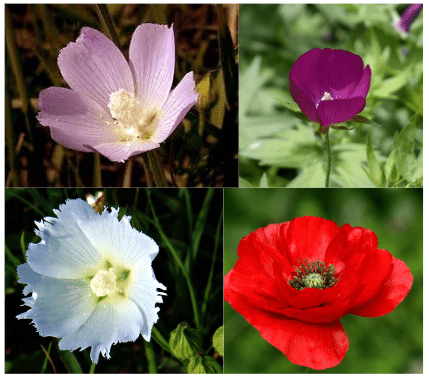
Choosing the Right Location
A. Sunlight Requirements
When it comes to finding the perfect spot for your poppy mallow plant, sunlight is key. These beautiful blooms thrive in full sun, so be sure to choose a location in your garden that receives plenty of direct sunlight throughout the day. This will ensure that your poppy mallow plant can reach its full potential and show off its vibrant colors to their best advantage. So, when considering where to plant your poppy mallow, don’t settle for anything less than a sunny spot to let it shine.
B. Soil Preferences
When it comes to soil preferences, poppy mallow plants are fairly low-maintenance. They can thrive in a variety of soil types, including clay, sandy, or loamy soil. It’s important to make sure the soil is well-draining to prevent waterlogging, but other than that, Purple poppy mallow are pretty forgiving when it comes to soil conditions. So, whether you have rich, fertile soil or something a little less ideal, rest assured that your poppy mallow plant can still flourish and bring beauty to your garden.
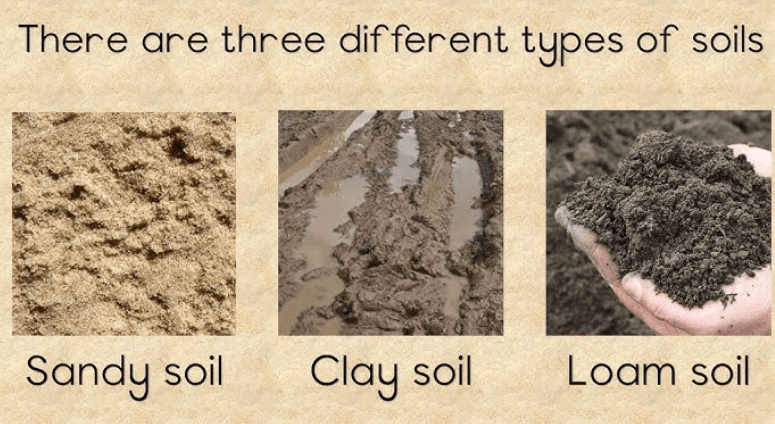
1. Soil pH recommendations and amendments
When it comes to soil pH, Purple poppy mallow prefer slightly acidic to neutral soil with a pH range of 6.0 to 7.0. If your soil’s pH is outside of this range, don’t worry – it’s easily amendable with the addition of organic matter such as compost, peat moss, or pine needles. These amendments can help to lower or raise the pH as needed, creating the perfect growing conditions for your poppy mallow plant. So, don’t let soil pH limitations hold you back – with a little bit of effort, you can create the ideal environment for your poppy mallow to thrive.
C. Space Considerations
When planting poppy mallow, it’s important to consider the spacing between each plant. These beautiful flowers need room to spread out and grow, so be sure to give them plenty of space to thrive. Typically, poppy mallow plants should be spaced about 12-18 inches apart to allow for proper air circulation and prevent overcrowding. This spacing will not only allow your plants to thrive and reach their full potential, but it will also create a stunning and visually appealing garden display. So, when planning your garden layout, remember to give your Prairie poppy mallow the space they need to flourish. You won’t regret it when you see the beautiful results!
Planting Poppy Mallow
A. When to Plant
When to plant poppy mallow? The answer is simple – now! Don’t wait any longer to add these gorgeous flowers to your garden. The best time to plant poppy mallow is in the spring or fall when the soil is cool and moist. By planting now, you’ll give your poppy mallow plants the best chance to establish strong roots and thrive in your garden. So, don’t hesitate – get out there and start planting your poppy mallow today. Your garden will thank you for it!
B. Propagation Methods
There are various propagation methods for growing Prairie poppy mallow, and it’s important to choose the right one for your garden. Whether you prefer to propagate from seeds, cuttings, or divisions, each method has its own benefits and challenges. If you’re a beginner gardener, starting with seeds may be the easiest way to grow poppy mallow plants. On the other hand, if you have some experience and want to see faster results, propagating from cuttings or divisions can be a great option. Regardless of the method you choose, be sure to provide the right growing conditions and care for your Prairie poppy mallow to ensure vibrant blooms in your garden. With the right propagation method and care, you’ll be able to enjoy stunning poppy mallow blooms in no time. So why wait? Get started on growing your poppy mallow plants and enjoy the beauty they bring to your garden.
C. Planting Process
If you’re a beginner gardener, starting with seeds may be the easiest way to grow poppy mallow plants. On the other hand, if you have some experience and want to see faster results, propagating from cuttings or divisions can be a great option. Regardless of the method you choose, be sure to provide the right growing conditions and care for your poppy mallow plants to ensure vibrant blooms in your garden. With the right propagation method and care, you’ll be able to enjoy stunning poppy mallow blooms in no time. So why wait? Get started on growing your poppy mallow plants and enjoy the beauty they bring to your garden.
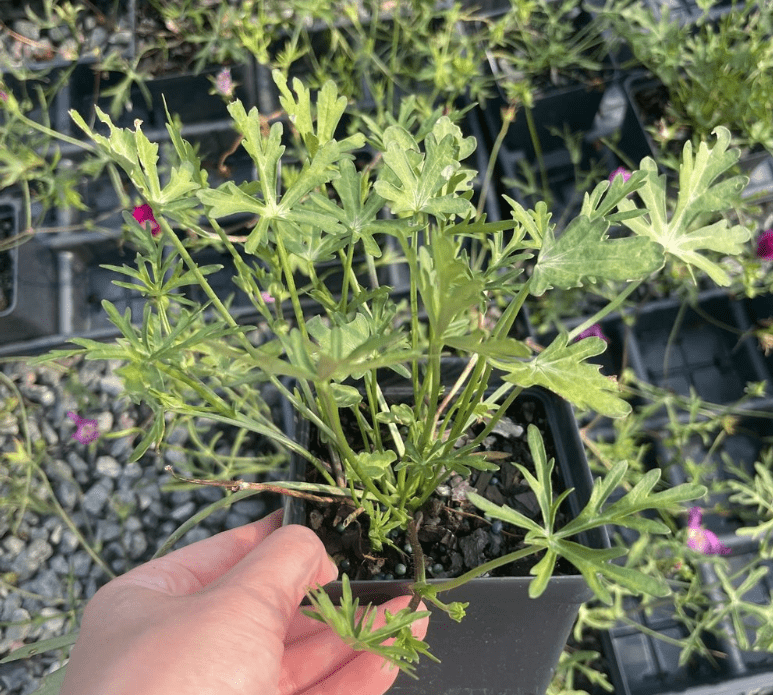
Caring for Poppy Mallow Plant
A. Watering Needs
When it comes to caring for your poppy mallow plants, ensuring they have the right amount of water is crucial. These plants prefer well-drained soil, so be sure not to overwater them. However, they do need regular watering, especially during dry spells or hot weather. It’s important to strike the right balance and keep an eye on the soil moisture to make sure your poppy mallow plants thrive. With proper watering, you’ll see beautiful, healthy blooms that will brighten up your garden. So, don’t skimp on this important aspect of care for your poppy mallow plants – give them the water they need and watch them flourish.
B. Fertilization
When it comes to fertilizing your Purple poppy mallow, it’s essential to provide them with the nutrients they need to thrive. These plants benefit from regular feeding during the growing season to promote healthy growth and abundant blooms. Using a balanced fertilizer specifically designed for flowering plants will give your poppy mallow plants the boost they need. With the right nutrients, your plants will be more resilient and able to withstand environmental stressors. So, don’t underestimate the power of fertilization in caring for your poppy mallow plants – give them the nourishment they need and watch them flourish.
C. Pruning and Maintenance
Let’s talk about the importance of pruning and maintenance when it comes to your poppy mallow plants. Regular pruning not only helps to maintain the shape and size of your plants but also encourages new growth and flowering. By removing dead or damaged limbs, you can improve air circulation and reduce the risk of disease. Additionally, routine maintenance such as weeding and mulching can contribute to the overall health and appearance of your poppy mallow plants. So, don’t neglect these essential tasks – a little bit of maintenance goes a long way in ensuring your plants look their best and continue to thrive.
Pest and Disease Management
A. Common Pests and Disease Prevention
When it comes to pest and disease management for your poppy mallow plants, prevention is key. By keeping a close eye on your plants and taking proactive measures, you can minimize the risk of infestations and diseases. Utilizing natural pest control methods, such as introducing beneficial insects or using organic pesticides, can help to keep pests at bay without harming the environment. Additionally, practicing good sanitation in your garden, such as removing dead plant material and keeping the area clean, can prevent the spread of diseases. So, don’t wait until it’s too late – take the necessary steps to prevent pests and diseases from wreaking havoc on your beautiful poppy mallow plants. Your garden will thank you for it!
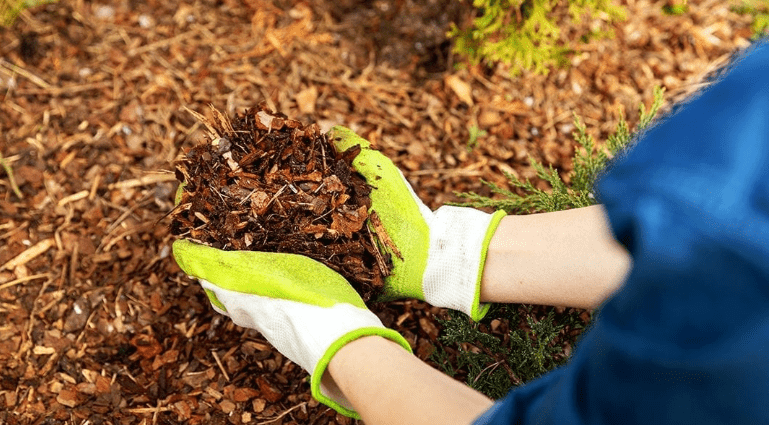
Seasonal Care Tips
A. Winter Care
It’s crucial to take the necessary steps to protect your poppy mallow plants during the winter months. Consider providing a layer of mulch around the base of the plant to insulate the roots and protect them from harsh cold temperatures. Additionally, consider covering your plants with a breathable fabric or cloche to protect them from frost and freezing temperatures. By taking the time to properly care for your poppy mallow plants during the winter, you can ensure their health and vitality come springtime. Don’t neglect your plants during the colder months – give them the care and protection they need to thrive.
B. Spring and Summer Maintenance
When it comes to spring and summer maintenance for your poppy mallow plants, it’s essential to keep an eye on them for any signs of disease or pests. Regularly inspect your plants for any issues and take prompt action to address them. Additionally, make sure to water your plants regularly, especially during hot and dry periods, to keep them healthy and thriving. Consider adding a layer of compost or organic fertilizer to provide your plants with the nutrients they need to grow and bloom beautifully. And don’t forget to deadhead your poppy mallow plants to encourage continuous blooming throughout the season. With proper care and maintenance, your poppy mallow plants will reward you with vibrant and stunning flowers that will brighten up your garden all spring and summer long. Give your plants the care and attention they deserve, and you’ll be rewarded with a beautiful and flourishing garden.
Landscaping with Poppy Mallow
A. Design Ideas
By giving your plants the care and attention they deserve, you can create a landscape that will be the envy of all who see it. So, take the time to inspect, water, and nourish your plants, and you’ll be rewarded with a garden that is not only beautiful, but also a reflection of your dedication and love for nature. With the right care and maintenance, your poppy mallow plants will thrive and bring joy to your garden for years to come. So go ahead, give your plants the care they deserve, and watch as your garden blooms into a stunning display of nature’s beauty.
B. Ground Cover Usage
Poppy mallow plants make a fantastic ground cover option for your garden. With their beautiful blooms and low-maintenance nature, they can easily spread and create a lush and vibrant ground cover that will enhance the beauty of your outdoor space. So, make the most of these stunning plants and use them to create a landscape that is not only visually appealing but also easy to maintain. By using poppy mallow as ground cover, you’ll be adding a touch of natural beauty to your garden while also minimizing the need for constant upkeep. It’s a win-win situation for both you and your plants. So, don’t hesitate to incorporate poppy mallow into your landscaping design and watch your garden transform into a breathtaking oasis.
Harvesting and Enjoying Poppy Mallow Flowers
A. Cutting Flowers for Arrangements
When it comes to harvesting and enjoying poppy mallow flowers, there’s no better way to showcase their beauty than by cutting them for arrangements. These stunning blooms add a pop of color and elegance to any bouquet or floral display, making them a must-have for any flower enthusiast. By incorporating poppy mallow flowers into your arrangements, you’ll not only enhance the visual appeal of your space but also bring a touch of nature indoors. So, don’t miss out on the opportunity to enjoy these gorgeous flowers up close and personal. Take the time to cut and arrange poppy mallow flowers for a truly stunning and natural display that will brighten up any room. Embrace the beauty of poppy mallow and bring a piece of the outdoors into your home with a stunning floral arrangement.
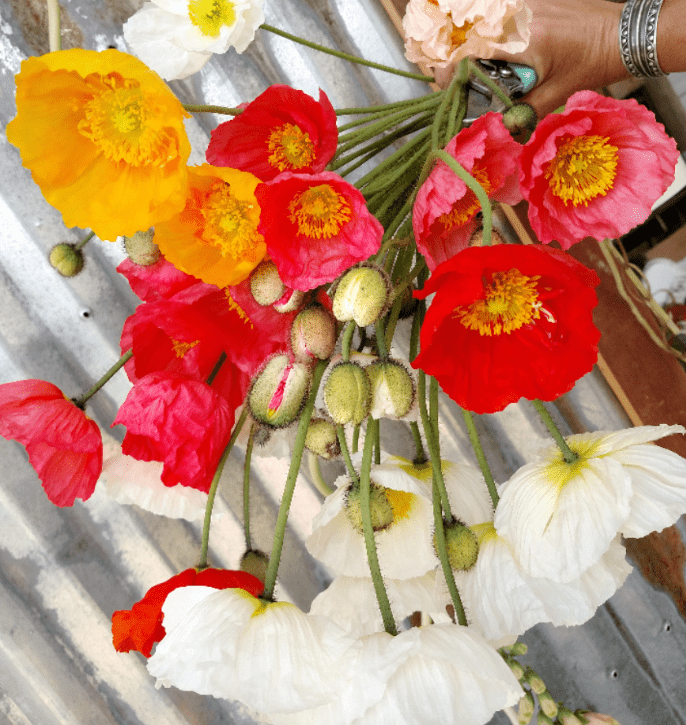
B. Uses in Floral Design
There’s no denying the beauty and versatility of poppy mallow flowers in floral design. Their vibrant colors and delicate petals make them the perfect addition to any bouquet or arrangement. Whether you’re creating a centerpiece for a special event or simply brightening up your home, poppy mallow flowers are a must-have for any floral enthusiast.
Not only do these flowers add a pop of color and elegance to any display, but they also bring a touch of nature indoors. The use of poppy mallow flowers in floral design allows you to showcase the beauty of these blooms up close and personal, creating a truly stunning and natural display.
So don’t hesitate to incorporate poppy mallow flowers into your floral designs. Embrace the beauty of these gorgeous blooms and elevate the visual appeal of your space with a stunning arrangement. Trust me, you won’t regret it.
In conclusion, growing poppy mallow plants can be a rewarding and beautiful addition to any garden. By following these expert tips, you can ensure that your plants will produce vibrant blooms that will enhance the overall beauty of your garden. Don’t miss out on the opportunity to create a stunning and colorful garden with these helpful tips for growing poppy mallow plants. Happy gardening!
Frequently Asked Questions (FAQs)
.
The best soil for poppy mallow plants is well-draining soil with a slightly acidic to neutral pH. Make sure the soil is not too compacted to allow for proper root growth.
Poppy mallow plants prefer dry to medium moisture levels, so water them sparingly. Overwatering can lead to root rot, so it’s best to let the soil dry out between waterings.
Yes, poppy mallow plants thrive in full sun, so make sure to plant them in an area where they can receive at least 6-8 hours of direct sunlight per day.
To encourage vibrant blooms, deadhead the spent flowers regularly to promote continuous blooming. Additionally, applying a balanced fertilizer in the spring can help boost flower production.
Poppy mallow plants are relatively resistant to pests and diseases, but they can be susceptible to aphids and powdery mildew. Keep an eye out for these issues and treat them promptly if they arise.
Poppy mallow plants are generally hardy and can tolerate cold temperatures, but they may benefit from a layer of mulch to protect their roots during harsh winters.
You can propagate poppy mallow plants by collecting and planting their seeds, or by dividing mature plants in the spring. Both methods can help expand your poppy mallow garden.
Providing proper support, such as staking taller varieties and keeping the area around the plants weed-free, can help ensure healthy and vibrant growth for your poppy mallow plants.
